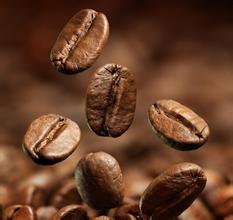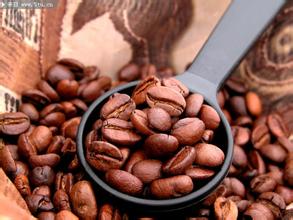Casa Luis Manor Coffee Flavor Taste Variety Features Production Area Introduction
The national emblem of Panama was launched in 1904 by a brown eagle with its head held high and its wings spread.
Panamanian national emblem
Panamanian national emblem
It stands on the national emblem with a white ribbon with the Panamanian motto "for the benefit of the world". In the middle of the national emblem is the brown isthmus of Panama, the blue Pacific and Caribbean seas, and the Panama Canal that connects them; under the blue sky, a bright moon has risen, the corresponding sunset is still shining in all directions, symbolizing the arrival of Panama's independence "at sunset and moonrise"; the silver sword and rifle crossed on the upper left have experienced the ups and downs of hundreds of years of war on Panamanian land. The T-pick and shovel on the upper right represent the country's call for active construction and hard work; the sheep's horn overflowing with gold coins and the golden two-winged flywheel symbolize the progress and prosperity of the country. Four national flags are decorated around the national emblem, and the top nine golden five-pointed stars represent the nine provinces of Panama
The unique orange flavor of Panamanian geisha, with the "orange gene kissed by God", must have benefited from the protection of good mountains and water in Panama. The low temperature and stable climate at high altitude makes the coffee here grow slowly and the beans are hard. All have a unique and strong flavor. Although geisha is good, its output is really limited. The annual production of geisha in the Jade Manor is less than 12 tons, and the top grade is no more than 200 to 300 kilograms, so it is difficult to satisfy the taste buds of coffee lovers all over the world. as a result, major well-known producing areas around the world have stepped up the trial of geisha, trying to show different landforms and different flavors of geisha.
Panama's geographical conditions from east to west let the cold air flow through the Central Mountains converge to more than 6500 feet, thus forming a variety of unique microclimates in Boquete, Volc á n, Candela, Santa Clara and other places, coupled with nutritious and balanced volcanic ash soil, these areas have also become Panamanian coffee and famous producers of the world's top boutique coffee.
Coffee cultivation in Panama began with the first batch of Typica coffee seedlings brought by Europeans in 1780, and today it has been developed and planted with Typica, Caturra, Catuai and Geisha varieties, producing jasmine, citrus, ripe fruit, berries, caramel, special sweetness, vanilla, chocolate and other flavors. According to the variety, the output of Panamanian coffee is small, only 240t per year, and Geisha is less than 5%. Panamanian coffee is mostly washed, refreshing and clean can highlight the citrus aroma of geisha, but in recent years, sun-dried geisha is also quite bright, and the transaction price often exceeds that of water washing.
Panama has a world-famous boutique coffee estate, needless to say the Emerald Manor (La Esmeralda) in the Boquete district on the east side of the volcano. Geisha Mario, produced by Jaramillo, and Geisha Montana, produced by Kania Canas Verdes, have set a new auction record for geisha, and Geisha Arista Agrario from Finca la Valentina in the same area won the 2011BOP championship. Carmen Manor (Carmen Estate) in Volcan District on the west side is no less than Carmen Manor. For many years, the boutique is often according to the top five of BOP competitions.

Important Notice :
前街咖啡 FrontStreet Coffee has moved to new addredd:
FrontStreet Coffee Address: 315,Donghua East Road,GuangZhou
Tel:020 38364473
- Prev

Introduction to the characteristics of Flavor Coffee in Lazmus Manor, Colombia
Columbia Coffee is a representative and excellent variety of Arabica coffee. It is a traditional deep-roasted coffee with a strong and memorable flavor. Colombia, located in the northwest of South America, is a beautiful country with a long history. Indians have lived on this land since ancient times. 1531 AD
- Next

Introduction to the characteristics of Coffee Flavor and taste in Manor Erida, Panama
Panama City (Panama city), located on the peninsula near the mouth of the Pacific coast of the Panama Canal. Facing the Gulf of Panama and backed by the Ankang Valley, the city is picturesque. Originally an Indian fishing village, the old city was founded in 1519 and became the capital after Panama declared its independence from Colombia in 1903. In 2010, the total population was 1.71 million. As of 2014, the population of Panama
Related
- Does Rose Summer choose Blue, Green or Red? Detailed explanation of Rose Summer Coffee plots and Classification in Panamanian Jade Manor
- What is the difference between the origin, producing area, processing plant, cooperative and manor of coffee beans?
- How fine does the espresso powder fit? how to grind the espresso?
- Sca coffee roasting degree color card coffee roasting degree 8 roasting color values what do you mean?
- The practice of lattes: how to make lattes at home
- Introduction to Indonesian Fine Coffee beans-- Java Coffee producing area of Indonesian Arabica Coffee
- How much will the flavor of light and medium roasted rose summer be expressed? What baking level is rose summer suitable for?
- Introduction to the characteristics of washing, sun-drying or wet-planing coffee commonly used in Mantenin, Indonesia
- Price characteristics of Arabica Coffee Bean Starbucks introduction to Manning Coffee Bean Taste producing area Variety Manor
- What is the authentic Yega flavor? What are the flavor characteristics of the really excellent Yejasuffi coffee beans?

